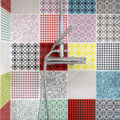Dry pasta (pasta sciutta!) is one of the most beloved symbols of Italian cuisine. The term refers to pasta seasoned and served without broth. Each region of Italy has its own traditional recipes. Many shapes but one passion, many different types of pasta, each with a shape, a history and an ideal pairing. At AbanoRitz the choice of pasta is never casual: it is part of the culinary art because each shape is created to best enhance the flavor of the sauce.
There are perhaps 500 types of Italian pasta and the most famous regional recipes are over 200. One in two Italians eats it every day and the White Gloves restaurant at the AbanoRitz offers it in many different ways both for lunch and dinner among the 4 first course options on its menu. A very typical dish offered on our menus, in addition to the risottos for which the Veneto is famous, is “Bigoli in salsa”. Bigoli are a type of thick, rough spaghetti, made with a special press. They are used with simple but flavorful sauces: with onion and anchovies it is the most well-known condiment and was born as a “lean” dish, perfect for Lent; it is said that it was the Venetian doges’ favorite pasta dish during the days of penance, but also much loved by gondoliers for its strong flavor and simplicity.
For foreigners, that is, half of the AbanoRitz clientele, it is an unmissable choice and among the favorites are: pasta alla norma, carbonara and oil, garlic and chili pepper
I read somewhere that 6 out of 10 Italians prefer long pasta and while 61% prefer ridged pasta, only 32.2% love the smooth versions. However, smooth pasta has an ancient tradition and its own elegance. It is particularly appreciated in some areas of southern Italy, such as Campania and Sicily, where it is used in traditional recipes such as the arrabbiata that foreigners love and choose. In the past, smooth pasta was more common also because it was easier to produce by hand, before the introduction of rollers that allowed the lines to be created.
Spaghetti, however, remain the undisputed kings of the ranking, but among the short pasta shapes, rigatoni (chosen by 25% of Italians) and mezze maniche (by 20%) remain undefeated and unbeatable. One thing everyone is sure of: choosing a good pasta is essential for the success of a good dish.
Italy is the home of creativity even at the table! In addition to the classic shapes, there are shapes with unusual names and shapes often linked to local folklore. Like Strozzapreti: it is a twisted pasta, typical of central Italy and legend has it that it was so good that it made priests “choke” in their throats. Or like Fregola, typical of Sardinia, which resembles cous but is thicker and toasted.
The true origin of pasta is still a matter of discussion among historians and gastronomes. Pasta, as we know it today, is an Italian invention, but has ancient roots intertwined with different cultures. Some say that Marco Polo brought pasta from ancient China in 1295, but in reality there are Arab and Italian documents that speak of pasta well before his journey. The first certain document in Italy dates back to 1154, when the Arab geographer Al-Idrisi describes the production of pasta in Trabia, near Palermo, where “threads of pasta” called tria were made, then exported throughout the Mediterranean. But it was in the Middle Ages and the Renaissance, in seaside cities such as Naples, Genoa and the whole of Sicily, that pasta developed as we know it: dried, long or short, and seasoned with sauces. The invention of the pasta press (15th century) gave rise to the production of the many shapes that today enter our pantries.
Pasta in itself is not the enemy of the figure. In fact, it can be part of a healthy and balanced diet. The secret? The right portions and balanced toppings. For our health, let’s not forget that pasta is rich in complex carbohydrates, which give energy slowly and help you feel full longer. It contains little fat and has a good protein intake, especially if integrated with legumes or vegetables. It is perfect for those who play sports, for those who work a lot… or for those who simply love to eat well.









Leave a Reply